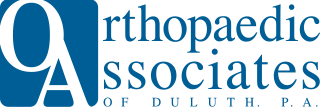Unlocking Relief: Exploring the Benefits of Dry Needling at Orthopaedic Associates
May 14, 2025
Have you been experiencing persistent muscle aches, tightness that just won’t quit, or limited movement that’s hindering your daily life or favorite activities? At Orthopaedic Associates in Duluth, we’re committed to offering a comprehensive range of therapies to help you find lasting relief and get back to feeling your best. One powerful tool in our Physical and Occupational Therapy toolkit is dry needling.
You might have heard about it, or perhaps it’s entirely new to you. So, let’s dive into what dry needling is and, more importantly, how it could benefit you.
What Exactly IS Dry Needling?
Despite the name, dry needling isn’t acupuncture, though both techniques utilize thin, solid filament needles. The key difference lies in their underlying philosophies and application. Acupuncture, rooted in Traditional Chinese Medicine, focuses on energy pathways (meridians) to restore balance in the body.
Dry needling, on the other hand, is a modern, evidence-based technique used by our skilled Physical and Occupational Therapists to address neuromusculoskeletal pain and movement impairments. The needles are inserted into specific trigger points (those tender knots in your muscles), as well as tight bands of muscle tissue.
How Does Dry Needling Work Its Magic?
While the exact mechanisms are still being researched, dry needling is believed to work by:
- Releasing Trigger Points: The insertion of the needle can help to mechanically disrupt the taut band of muscle and reduce the local twitch response associated with trigger points, leading to pain relief.
- Improving Blood Flow: The needling can stimulate local circulation, bringing oxygen and nutrients to the area and helping to flush out inflammatory substances.
- Reducing Muscle Spasms and Tension: By targeting the neuromuscular junction, dry needling can help to decrease muscle tone and alleviate painful spasms.
- Modulating Pain Signals: The technique may influence the way your nervous system perceives pain, potentially reducing both local and referred pain.
- Promoting the Body’s Natural Healing Response: The micro-trauma caused by the needle insertion can stimulate the body’s natural healing processes.

Who Can Benefit from Dry Needling?
Dry needling can be a valuable part of a treatment plan for a wide range of conditions, including:
- Muscle pain and stiffness: This is a primary application, addressing issues in the neck, back, shoulders, hips, and legs.
- Headaches and jaw pain (TMJ disorders): Targeting muscles in the head, neck, and jaw can provide relief.
- Sports injuries: Helping to manage pain, improve recovery, and restore function after strains, sprains, and other athletic injuries.
- Tendonitis and tendinopathy: Addressing pain and improving healing in tendons.
- Plantar fasciitis: Targeting tight muscles in the calf and foot.
- Sciatica and nerve pain: While not directly treating the nerve, it can address surrounding muscle tightness contributing to the pain.
- Post-surgical pain and rehabilitation: Assisting in pain management and restoring movement.
What to Expect During a Dry Needling Session at Orthopaedic Associates:
Your experienced Physical or Occupational Therapist will conduct a thorough assessment to determine if dry needling is appropriate for your condition. During the session:
- You’ll be positioned comfortably.
- Your therapist will gently insert thin, sterile needles into the identified trigger points or tight muscle bands.
- You might feel a brief, localized twitch or ache as the needle stimulates the muscle. This is often a sign that a trigger point is being released.
- The needles are typically left in place for a short period, ranging from a few seconds to several minutes.
- Your therapist may gently manipulate the needles during the treatment.
It’s important to note that dry needling is usually just one component of a comprehensive rehabilitation program that may also include manual therapy, therapeutic exercise, and patient education.
Is Dry Needling Right for You?
If you’re experiencing persistent muscle pain or limited movement, we encourage you to discuss your options with your doctor or one of our skilled Physical or Occupational Therapists at Orthopaedic Associates in Duluth. We can assess your condition and determine if dry needling could be a beneficial part of your journey to recovery and improved well-being.
Take the Next Step Towards Relief!
Don’t let muscle pain hold you back. Contact Orthopaedic Associates today to learn more about our Dry Needling services and how our dedicated PT/OT team can help you unlock relief and get back to enjoying life to the fullest, right here in the Duluth community.
We’re here to help you move better, feel better, and live better.

